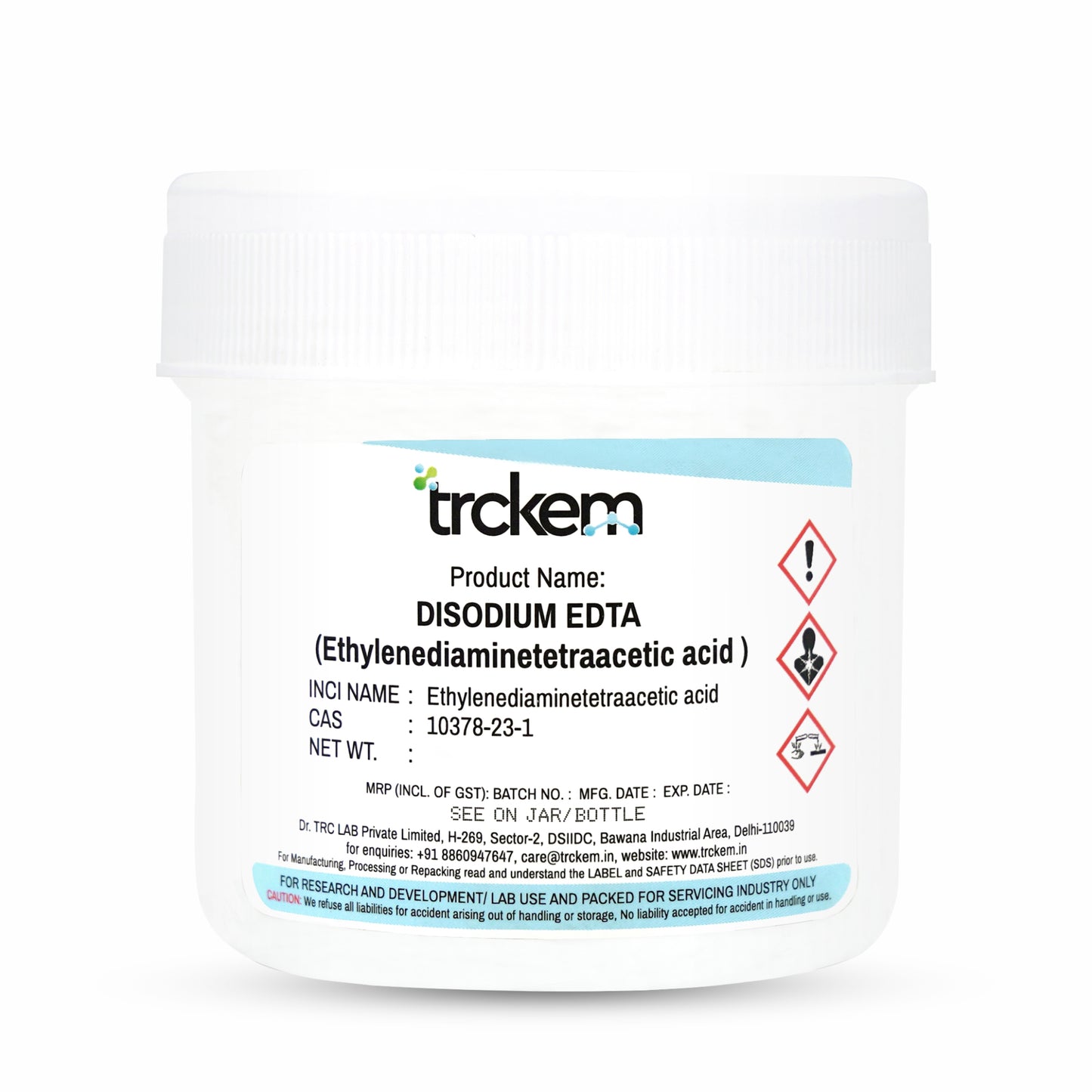
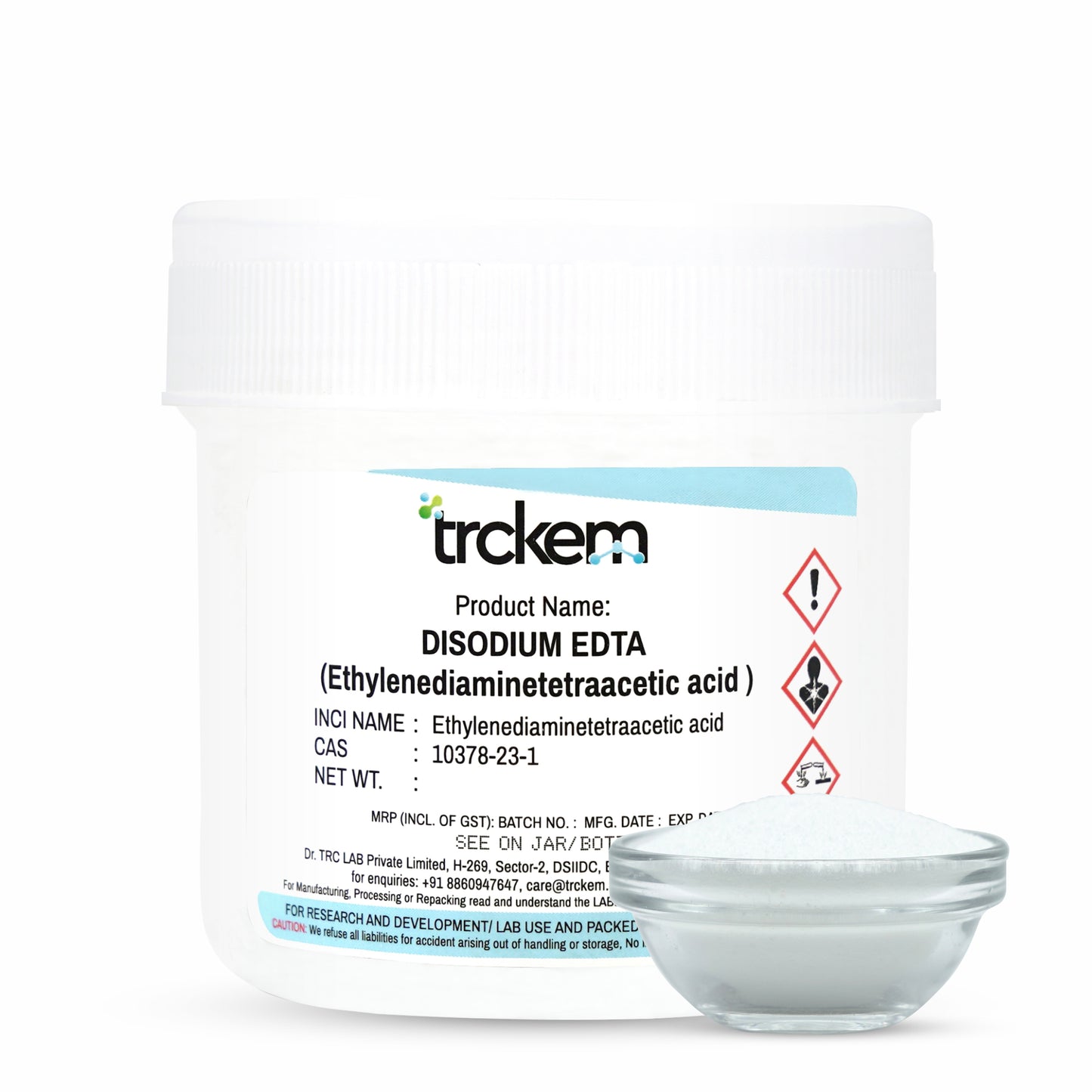
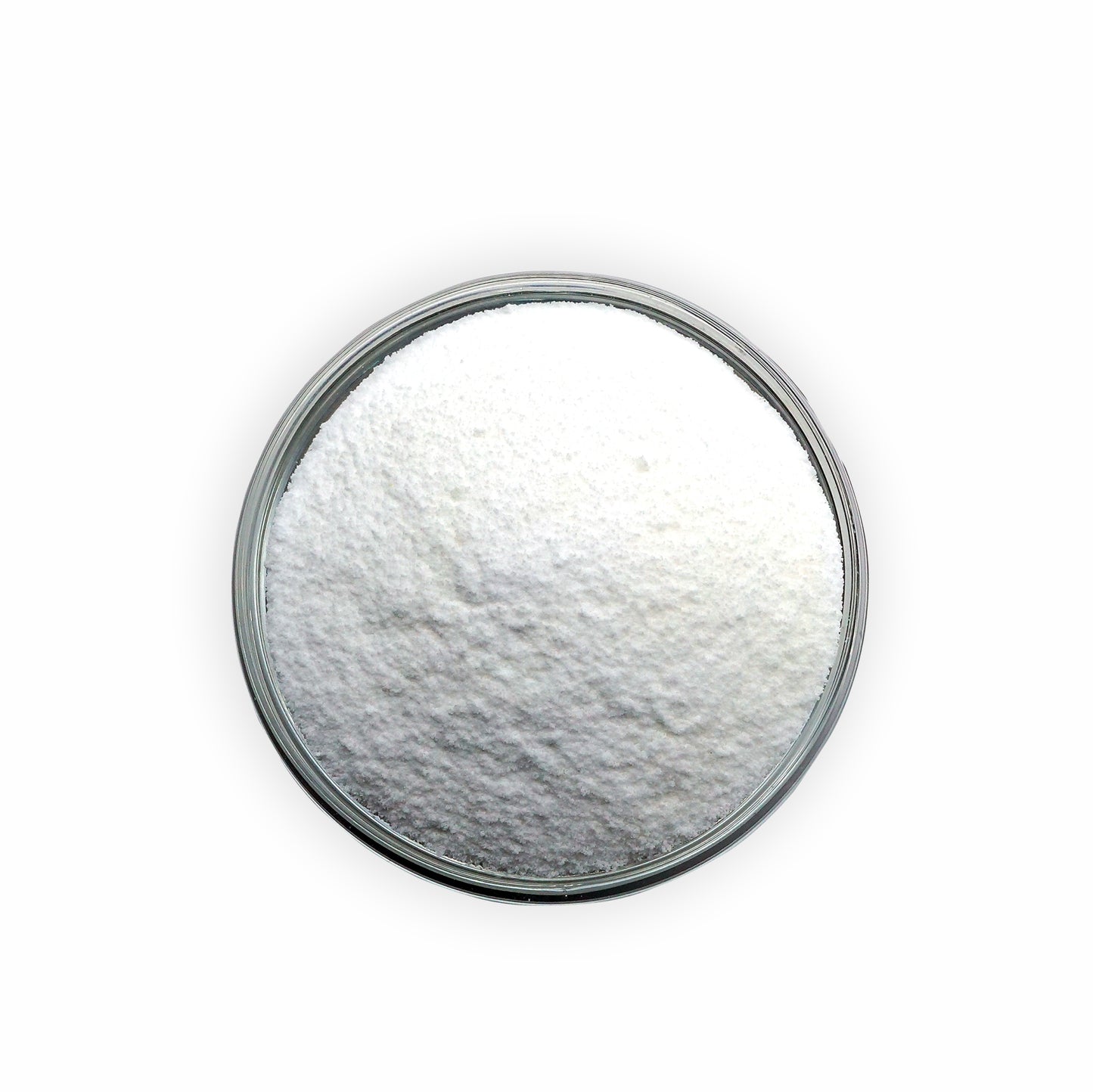
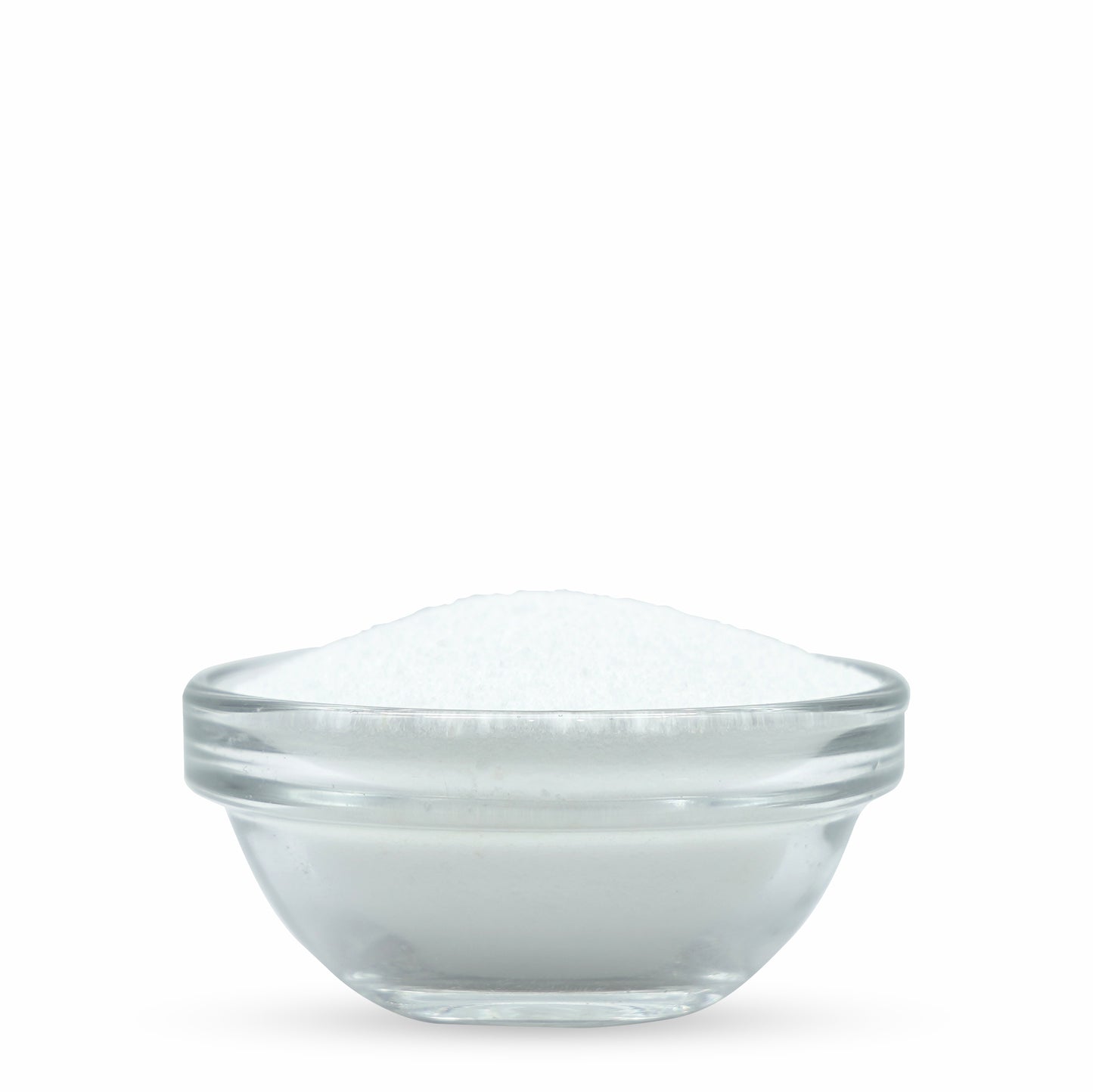
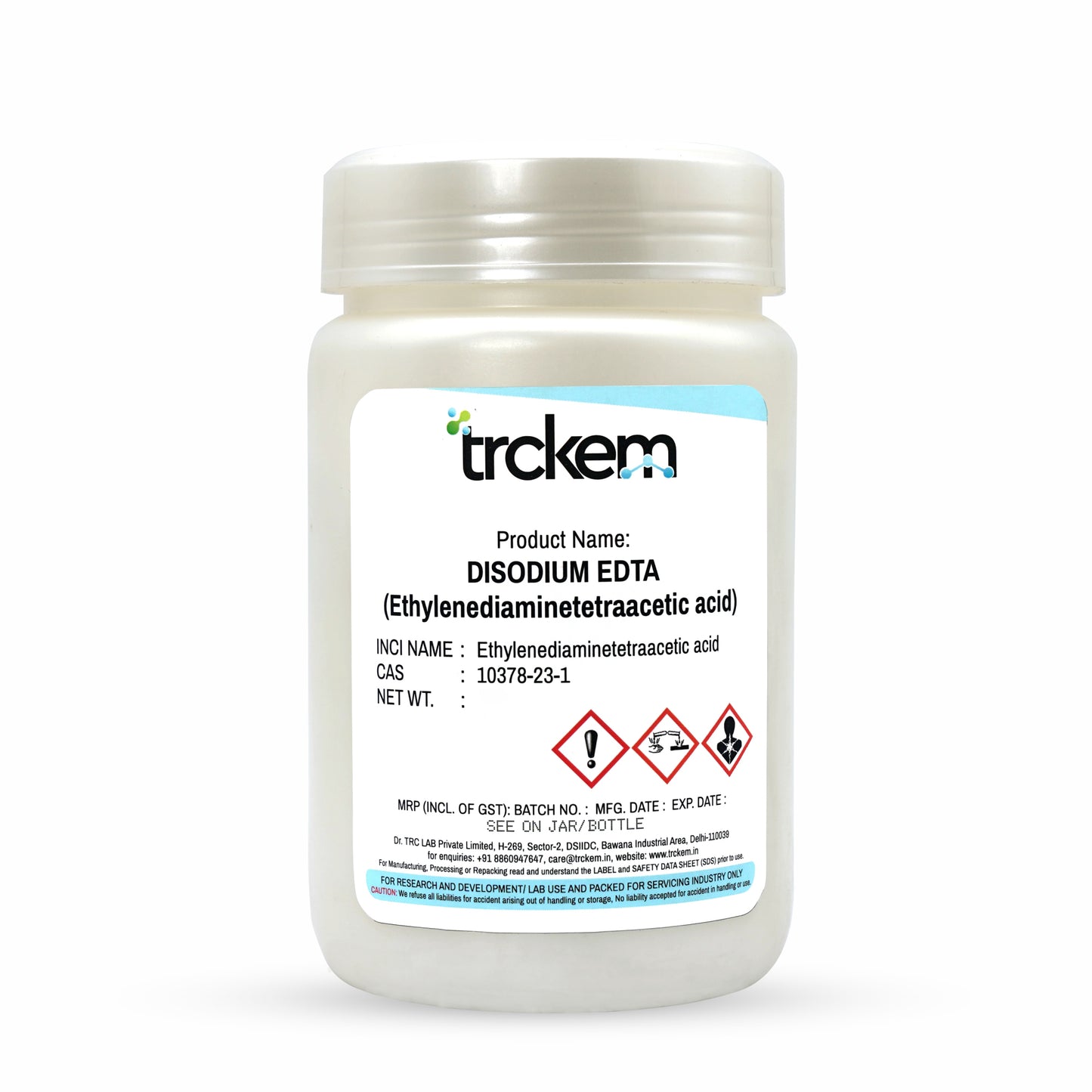
THE STORY OF DISODIUM EDTA

Disodium EDTA: The Essential Chelating Agent for Product Stability
Disodium EDTA is a highly effective chelating agent used across skincare, haircare, and personal-care formulations. It binds to metal ions that can cause instability, discoloration, rancidity, and loss of efficacy. Widely recognized as a key support ingredient, it helps maintain clarity, color, fragrance, and shelf stability in cosmetic products.

Synthetic Chelator Engineered to Neutralize Metal Impurities
Disodium EDTA is the disodium salt of Ethylenediaminetetraacetic Acid, created through controlled chemical synthesis.
It works by binding (chelating) metal ions such as:
• Calcium
• Magnesium
• Copper
• Iron
• Heavy metal traces
These ions often enter formulations through water, pigments, botanical extracts, or packaging. By binding them, EDTA ensures stability, clarity, and long-lasting product performance.

Stabilize. Protect. Preserve.
Key benefits in cosmetic and personal care products:
✅ Prevents product discoloration and oxidation
✅ Enhances preservative performance by reducing metal interference
✅ Improves foam stability in shampoos and cleansers
✅ Keeps fragrances stable and long-lasting
✅ Prevents rancidity in oil-containing formulas
Used in: shampoos, face creams, toners, serums, gels, soaps, color cosmetics, and oral-care formulations.

Reliable, Safe & Globally Approved for Everyday Formulations
• Typical use level: 0.05–0.2% in most formulations
• Water-soluble; add to water phase during heating or mixing
• Compatible with surfactants, emulsifiers, preservatives & colorants
• Safe for skin and hair when used within cosmetic limits
• Widely approved in EU, US, ASEAN, India, Japan
• Store in cool, dry conditions to prevent clumping
• Available in Disodium EDTA (pH ~4–6) or Tetrasodium EDTA (higher pH systems)
Formulator’s Queries, We Answered
1. What is the CAS number and INCI name of Disodium EDTA?
The INCI name of Disodium EDTA is Disodium EDTA.
The CAS number is 139-33-3.
2. What is Disodium EDTA?
Disodium EDTA (Ethylenediaminetetraacetic acid disodium salt) is a chelating agent widely used in personal care and cosmetic formulations. It binds to metal ions to enhance the stability and effectiveness of formulations.
3. What are the key functions of Disodium EDTA in personal care products?
Disodium EDTA serves multiple functions, including:
Chelating Agent: Binds to metal ions to prevent formulation degradation.
Preservative Booster: Enhances the efficacy of preservatives.
Stabilizer: Prevents changes in product texture, color, and effectiveness.
Foam Enhancer: Helps improve the performance of cleansing products.
4. What types of personal care products contain Disodium EDTA?
Disodium EDTA is commonly found in:
Shampoos & Conditioners – Enhances foam quality and product stability.
Facial Cleansers & Soaps – Prevents mineral deposits and extends shelf life.
Lotions & Creams – Improves formulation stability.
Serums & Toners – Enhances ingredient performance.
Makeup Products – Prevents color and texture changes over time.
5. What are the benefits of using Disodium EDTA in formulations?
Enhances Product Stability – Prevents unwanted reactions with metal ions.
Boosts Preservative Effectiveness – Reduces the risk of microbial growth.
Improves Texture & Appearance – Helps maintain product consistency.
Prevents Hard Water Effects – Reduces residue buildup in rinse-off products.
6. How is Disodium EDTA used in formulations?
Typically used at 0.01% to 0.5% concentration, depending on the formulation.
Easily dissolves in water-based systems.
Works best in formulations with a pH range of 3-9.
7. Is Disodium EDTA safe for use in personal care products?
Yes, Disodium EDTA is considered safe when used within recommended concentrations. It is approved by major regulatory bodies such as the FDA and CIR (Cosmetic Ingredient Review) for use in cosmetics and personal care products.







